With the coming of Chinese New Year's Eve, people around China are busy preparing for the Spring Festival Eve dinner with their families, which is the most important dinner of the whole year. There is always a dish that best represents the holiday in people's minds. Each area of the country has its own distinctive dish that is deemed indispensible at this time of year. Nanjing, East China's Jiangsu province Boiled salted duck It's not only for Spring Festival Eve dinner - salted duck is a famous local product in Nanjing. Sun Cong, who has worked in Nanjing after graduting from university, is busy mailing her friends boiled salted ducks and her New Year greetings with the distinguished gifts. "We like to store pickles in winter. It's not cold enough to keep foods through the months, which used to be the reason for making salted ducks. But now, it remains a custom since everyone has a fridge," Sun said.
Zhangjiajie, Central China's Hunan province Stewed pig's feet As a gathering place for the Tujia ethnic minority, Zhangjiajie preserves the traditional customs and foods of this minority group. Zhang Wenjuan, a college student abroad in Italy, won't be home for Spring Festival but will miss the stewed pig's feet on her family's dinner table. "I've never thought about why before, but we always have pig's feet for festival dinners," Zhang said, adding that it might be because pig's feet signifies making a fortune in the coming year, according to Chinese traditions. In Zhang's hometown, it is custom to finish the New Year Eve's dinner before sunrise, a tradition known as "chasing the New Year". Liuzhou, South China's Guangxi Zhuang autonomous region Stewed chicken with spiral shells Stewed chicken with spiral shells. [File photo] Though not as famous as spiral shell rice noodles, stewed chicken with spiral shells is a must for reunion dinners among the Liuzhou people. Wei Liyi, a graduate student at Tsinghua University, has been waiting a whole year for a dish of spiral shells, which is a symbol of his hometown. "Though it stinks with the smell of sour bamboo shoots, it really tastes good. We just can't stop when eating it," Wei said, adding that he's happy to see more and more authentic spiral shell food shops in Beijing. Beijing, capital of China Pai cha-er Pai cha-er. [File photo] Crunchy and crispy, the traditional Beijing-style fried pastry made from flour and sesame is a perfect snack that goes with wine and a must-have appetizer for Spring Festival dinner in typical Beijing households. "I'm always greeted with the fragrance of 'Pai Cha-er' each time I go to my grandma's home for the Chinese New Year's Eve dinner. It is a perfect taste of Spring Festival", said Cai Mengxiao, a woman who grew up in Beijing. "Young people now bother less and less to make traditional homemade food. It just came into my mind that I'll learn to cook Pai cha-er this year, to pass on this traditional Beijing gourmet." Wuhan, Central Chin's Hubei province Sticky mariko The indispensable dish for the Spring Festival dinner in Wuhan is usually made by first blending minced pork, lotus roots and various seasonings, including salt, soy sauce and wine. Deng Xin, a 23-year-old studying at Beijing Language and Culture University, said that it's fun to make individual balls of roughly consistent size wrapped with sticky rice, and then finally frying and steaming them. "Yuanzi(the Chinese pronunciation of the dish) always represents our best wishes for Tuanyuan, 'family reunion' in Chinese. In our school there are a great many foreigners and I will invite foreign friends to my hometown to have an authentic taste of the Sticky mariko some day," said Deng. Macao Special Administrative Region "Dish with Good Intentions" While Tangyuan(rice dumplings) is rather a dispensable option, "Yik Tao Tsoi" (dish with good intentions) is customary for reunion dinners on the eve of Spring Festival in Macao. Consisting of multiple ingredients, the dish is like a cornucopia, with each kind of food representing a specific good wish. The cauliflower, "Fat Tsoi" in Cantonese, for instance, is homophonic to another word that means "getting rich", to demonstrate people's wish to make a fortune. "Hou Si", dried seafood, sounds quite like "hao shi" in Chinese, which denotes "lucky things", so it always makes an appearance at the reunion dinner with the hope that something good will happen in the next year. Hoi Kaweng, a woman from Macao who works at the Bank of China, is busy preparing the food needed to make the "Dish with Good Intentions". "Actually, the process of preparation also provides us the opportunity for a family reunion and it is always brimming with love and harmony". Yan'an, West China's Shaanxi province Millet cake Millet cake. [Photo/From the Internet] New Year cake is popular in many places in China. But a cake from northern Shaanxi province is special because it's made of millet powder. Gao Ge, a young man living in Beijing who grew up in the old revolutionary base area Yan'an, is proud of the traditional cake in his hometown. "My grandparents and my parents make millet cake every year before Spring Festival, which is even more important than dumplings for our family," Gao said, adding that young people nowadays are mostly buying instead of making millet cakes. Korla, Xinjiang Uygur autonomous region Roasted stuffed bun The traditional food for Uyghur family feasts is one of the most favored dishes for the reunion dinner in Korla, a town in Bayingolin Mongol autonomous prefecture. Cooked in clay roasters, roasted stuffed bun is rarely seen in modern cities. Before every Spring Festival, however, Ghoulam Mutalep's grandmother will go back to the village and make roasted buns with stuffing. "It's more than a stuffed bun, but a symbol of our tradition and culture and my grandma's love," Mutalep said. Chifeng, Inner Mongolia autonomous region Mutton eaten with hands Mutton eaten with hands. [Photo/From the Internet] Mongols live their lives in the prairies in the north of China, where they eat big pieces of mutton with their hands, bold and unrestrained. Meng Gencang, a Mongolian soldier with the Chinese Armed Police Force, has spent seven Spring Festivals with the army in Beijing. This year, his mother mailed him mutton from Inner Mongolia, teaching him how to boil it with salt and other spices, so that Meng will be able to share the dish from his hometown with his comrades on Spring Festival Eve. "In festivals, we drink and eat mutton with our hands from the morning to the evening, and that's the way we celebrate," Meng said. Taipei, Taiwan province Steamed mullet roe Around Chinese New Year, shoals of mullets swim to the east of Taiwan to escape from chilly winter, providing abundant material for a traditional dish in Taiwan - mullet roe. Cheung Chi-suen from Taipei is now pursuing his PhD degree in Japan. When asked about the dish that he misses most during Spring Festival, he gushed about the steamed mullet roe cooked by his mother. "The steamed mullet roe has been the indispensable dish for Spring Festival since I was little. It almost becomes the epitome of my childhood. I can still remember my mom saying that the trick to cooking the dish is to add minced garlic after steaming the roe for ten minutes. It helps to preserve the original flavor of the roe." Fuzhou, South China's Fujian province Lychee meat Lychee meat. [Photo/From the Internet] Lychee meat is the best representative of Fujian cuisine, which is characterized by sweet and sour flavors. In this dish, pork is cut crosswise, fried and then soaked in tomato sauce. The pork tastes and looks like lychees in this way - hence the name. Chen Jieling, now working in Dalian, Northeast China, expressed her fondness for lychee meat. "Fuzhou abounds in lychee due to its warm climate. However, after I came to Dalian, a rather cold place compared to Fuzhou, I can rarely taste the lychees as good as those produced in my hometown. Thanks to my grandma, I've learned how to cook lychee meat. The dish really comforts me when I'm homesick and miss the lychees in Fuzhou," she said. Harbin, Northeast China's Heilongjiang province Stewed pickled cabbage with pork and black pudding Stewed pickled cabbage with pork and black pudding. [Photo/From the Internet] In the past, people from northeastern China had little food to eat due to the cold weather, so they'd kill a home-raised pig to make dishes celebrating Spring Festival. Nowadays, although there are plenty of food to consume, those in Harbin are still obsessed with dishes made out of pork. Among them, stewed pickled cabbage with pork and black pudding is the most popular. Li Yuanbao, a college graduate who just got an offer from a major accounting firm in Beijing, came back to his hometown Harbin to celebrate his success with "authentic pork cuisine". "Without pork and black pudding, life seems incomplete to me. It's freezing in the winter in Harbin and this dish can warm your whole body," he said.
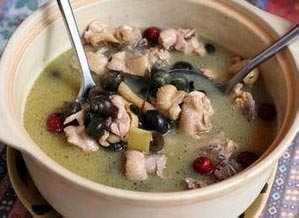
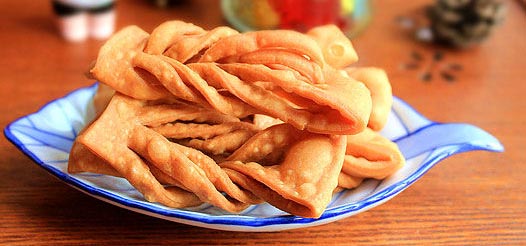
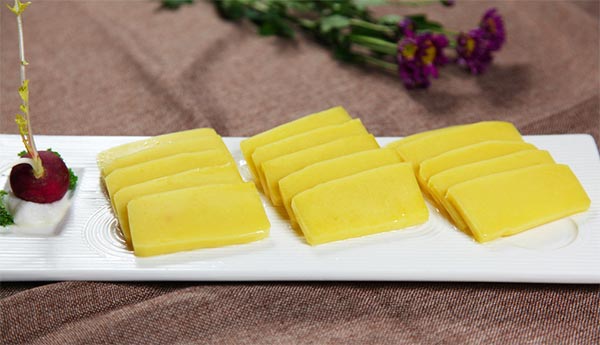
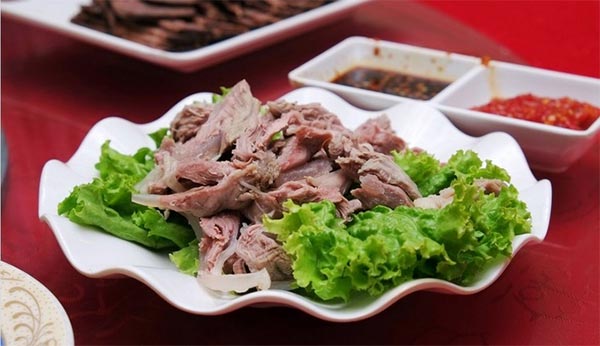
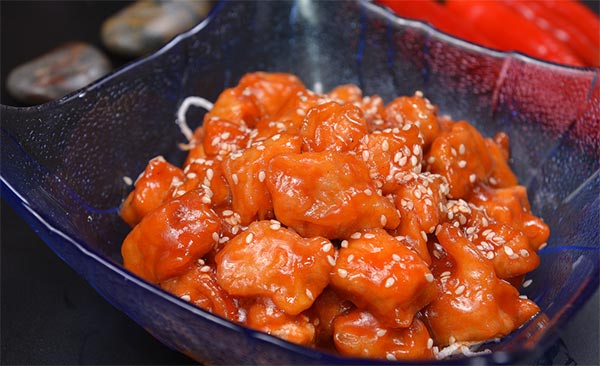
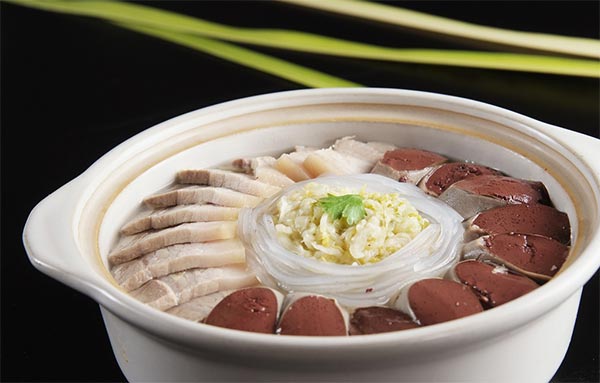
Spring Festival Eve dinners around China
Editor:李莎宁
Source:中国日报网
Updated:2016-02-16 11:05:41
Source:中国日报网
Updated:2016-02-16 11:05:41
Special
Contact
Welcome to English Channel! Any suggestion, welcome.Tel:0731-82965627
lisl@rednet.cn
zhouqian@rednet.cn











